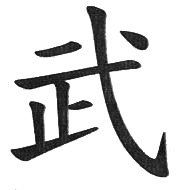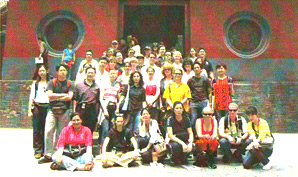 Many people know that feng shui is about the qi in the environment and tapping the qi or drawing the qi into their homes or offices.
Many people know that feng shui is about the qi in the environment and tapping the qi or drawing the qi into their homes or offices.
But often, there is a lack of understanding as to where this qi is coming from.
It is probably because of this lack of understanding that everything under the sun, from fish to ornamental Chinese art (and lately, plants) have been said to “ emanate qi ” .
When feng shui practitioners talk about dragons and water in feng shui , we are talking about the landform of the environment, or luan tou .
In Chinese Metaphysics, mountains are formed by the magnetic pull of the stars in the sky. These mountains are where qi resides.
An important aspect of feng shui practice is proper knowledge and understanding of landform or luan tou .
If a practitioner doesn ' t understand how mountain formations and river formations work in the environment, then it ' s very difficult for them to know what the qi is in the environment.
And if you don ' t know what ' s in the air how are you going to tap it correctly?
Hence, an important part of any feng shui practitioner ' s training and knowledge is the experience known as “ walking the mountains ” .
It is through this process that a practitioner is able to truly understand and appreciate the principles of landform enunciated in the ancient classics such as Ru Di Yan (Entering Earth Eye).
When it comes to understanding and appreciating landforms, the depth of knowledge extends beyond just knowing what is the White Tiger and the Green Dragon.
Did you know for example that mountains have different shapes? And that each shape represents a different element in the Five Elements or the Nine North Dipper Stars?
And the type of mountain influences the qi in the environment and the type of people and the achievements they will have?
A properly qualified feng shui master is one who not only applies the formulas and calculations used in the different feng shui systems, but also has an eye for the landform, the mountains and rivers in the vicinity.
He should know the difference between the mountains in Las Vegas and those in Taman Tun Dr. Ismail, what kind of mountain is found in Manchu Picchu (it ' s a Tan Lang Mountain ), how it is different from the ones in Genting Highlands.
And he should be able to pick out the different formations in the limestone mountains that surround Ipoh .
Walking the Shaolin Dragon
The importance of landform feng shui cannot be under-stated and that is why each and every year, I take my students on a trip to China , so that they can learn landform feng shui hands on.
Recently, part of our trip included a visit to the famed Shaolin Temple , a place synonymous with kung fu.
The temple has been in existence for almost 2,000 years and it is today a leading center for the study of martial arts as well as Zen Buddhism.
To understand why the Shaolin Temple became the birthplace of kung fu and continues to be associated with martial arts, you simply have to take a look at the mountains that surround it.
They are high, majestic, but hard, tough, bony and spartan looking.
If you have been there, you will notice that the mountains do not have much greenery and are “ bald ” – a lot of rock and very harsh and desolate looking.
That already gives us a hint of the kind of qi that is influencing the area.
Dominating the area of the temple itself is a strong “ Military Arts ” Wu Qu Xing mountain. This is a mountain that is shaped a little bit like a witches hat.
Military Arts mountains, in the study of landform feng shui , are of the “ Metal ” element, and thus, is perfect for the study of kung fu, which requires rigorous, hard and military like training to perfect and entails aggression and ruthlessness.
In this formation it is also known as the “ Rising Sun ” . The temple itself taps into a unique gnarled, slightly tilted (Tan Lang) Greedy Wolf mountain but what makes the landform formation interesting is that it is very clearly a Wood transforming into Fire formation.
This formation is not only perfect for a religious place but also for a place that engaged in the cultivation of fighting skills and martial art.
Hence, the Shaolin Temple is perfectly located for the study of Wu or art forms that are physical in nature.
In front of the temple, there is a visible table mountain or an shan .
In the study of landform feng shui , the table mountain, be it for a yin house or a yang house, should not be too high – if you stand in front of it and stretch out your hand at eye level, the top of the mountain should be at eye level.
This is considered a perfect table mountain.
At Shaolin, the table mountain is very high but because the purpose of temple is spiritual learning and the study of martial arts, this is acceptable.
Shaolin is also an excellent illustration of how luan tou feng shui works.
Luan tou , which means, the face of the mountain, is a study of how from different perspectives, a mountain can take different forms and thus, can be tapped for different purposes.
A single mountain can be used for yin house or yang house.
At Shaolin, there is also a graveyard where many illustrious masters and monks of Shaolin are buried.
These graves tap into the same mountains that surround the Temple , but because the graveyard is located a slight distance away from the Temple the type of qi that influences the graveyard is different because the mountain has a different face.
In a modern context, this means that different pieces of property can tap into one mountain in the vicinity, but due to the different directions and locations, have different qi influencing it.
Feng shui is not about beauty, but qi
Many people see mountains as simply beautiful or majestic. But to feng shui practitioners, we look beyond beauty.
We are interested in the qi it emanates, whether or not it is a noble looking mountain, what type of influence it will have on the inhabitants – will they be famous?
But landform is not just about the mountains themselves – it is about whether or not a property can tap into the qi by having the right kind of embrace, a good table mountain and water in the right location.
Truly, walking the mountains, chasing the dragon vein, standing on top of a meridian spot, is an experience that no book, no video, and no classroom, can ever recreate.
One must feel, sense, hear, and see, feng shui and landform, in order to appreciate it, understand it and most importantly, use it in daily practice of feng shui .





 Many people know that feng shui is about the qi in the environment and tapping the qi or drawing the qi into their homes or offices.
Many people know that feng shui is about the qi in the environment and tapping the qi or drawing the qi into their homes or offices. 


